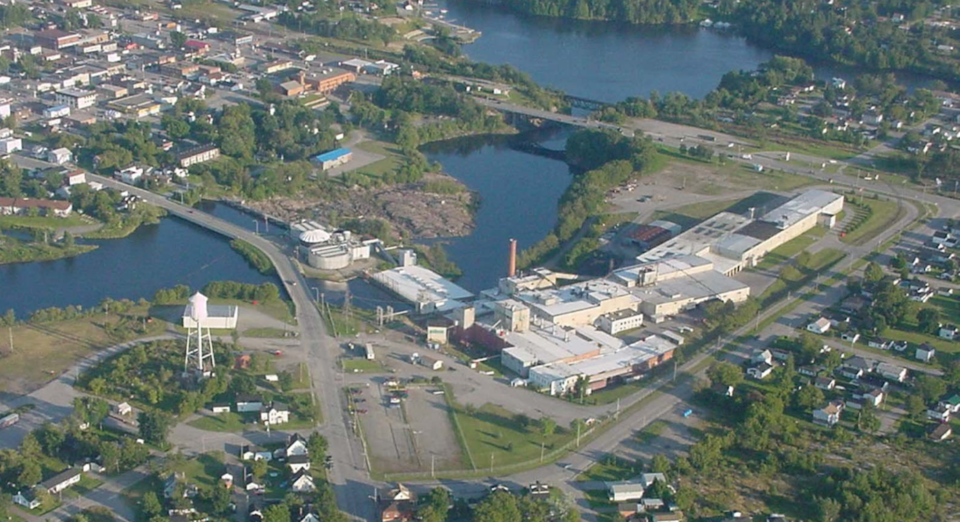West Nipissing Mayor Joanne Savage said her municipality is considering a “multitude of options” for the old Sturgeon Falls mill site, and is looking forward to hearing ideas from residents once consultation sessions wrap up in the fall.
If results of public opinion are to be believed — the municipality has been presenting community feedback on its Former Mill Site Development Strategy web page — residents would prefer the former Weyerhaeuser property to be transformed into parkland and recreational area, or adapted to accommodate housing.
“It will be interesting to see what the findings will reflect. And also what is the will of the community,” Savage said.
“From there, once that information is received, council will have to initiate discussion and keep the public informed as the situation progresses.”
West Nipissing, located 35 kilometres west of North Bay, is an amalgamated municipality of villages and townships formed in 1999. Comprising a population of more than 14,000, its largest town is Sturgeon Falls.
In late 2002, Weyerhaeuser announced it was dropping the axe on the corrugated paper plant, the industrial cornerstone of Sturgeon Falls, eliminating 140 jobs. The mill buildings were demolished shortly thereafter, but the brownfield property has remained vacant all these years.
Want to read more stories about business in the North? Subscribe to our newsletter.
One comment on the mill site redevelopment public input page reads: “We need to go multiuse. I imagine low-rise accommodations with lobbies as space for small businesses and eateries, with a big open green space and a path along the water that connects the marina to the mill site. Go ‘radical’ and become the example.”
Another reads: “Multiuse is crucial. A good blend of commercial residential and public space.”
The mill site — Savage describes it as an “eyesore” — was purchased from American forest products giant Weyerhaeuser in December 2020 for $156,000.
At the time, there was some pushback from councillors about the risk around purchasing a former industrial site, and concerns taxpayers may be on the hook for any environmental remediation. But once environmental assessments were completed, the purchase was given the go-ahead from council.
That doesn’t mean there won’t be further assessments needed later, Savage said, but those will likely happen after the property goes through a rezoning process.
“At the end of the day, was it a worthwhile investment? Yes, it was,” Savage said. “And now it's an opportunity for West Nipissing to engage in the process, and to provide their feedback.”
The political momentum to redevelop the site should come as some relief to people living near the old mill. Since the mill’s closure in 2003, the building had been left neglected, with surrounding property left to run overgrown.
“In Sturgeon Falls, people have a lot of pride and joy regarding the maintenance of their property and the maintenance of our community,” Savage said.
“And every time you would drive by there, you’d say, ‘Oh, well, this would be a perfect area for a picnic site. This would be a perfect area for this, or that would be a perfect area for that.’”
Upkeep of the property should change, now that site is now entirely owned by the municipality, as well as a wide stretch of greenspace along the Sturgeon River which Savage calls a “jewel” of a property.
The municipality will also continue to own and operate the power generator on site, Savage said, following a major capital investment in 2018 to install new turbines.
“Even though the investment was quite a few million dollars…there's still a return on the investment and to this day, the municipality receives annual dividends,” Savage said, estimating the annual return to be in the neighbourhood of $350,000. Those dividends, Savage said, are plowed back into municipal infrastructure projects.
This could be another big step in the transformation of Sturgeon Falls from a one-industry lumber town into a thriving, economically self-sustaining community.
Savage said they’ve moved on from relying on the mill, to diversifying enough where it can count on several small and medium-sized businesses to prop up the local economy.
Looking at it from a different perspective, Savage said she hopes that the community’s story can not only be an inspiration to other smaller towns, but also showcase the area to southerners who have maybe grown disenchanted with life in the big city.
“This is about making sure that people throughout the province know that there are communities beyond the greenbelt, beyond Muskoka,” Savage said.
“The North has a lot to offer as far as quality of life, and that we're very blessed, because we have the land base, all these amenities that we can enjoy in our own backyard.”
Savage said she expects the final report on the site to be presented to council in October.




